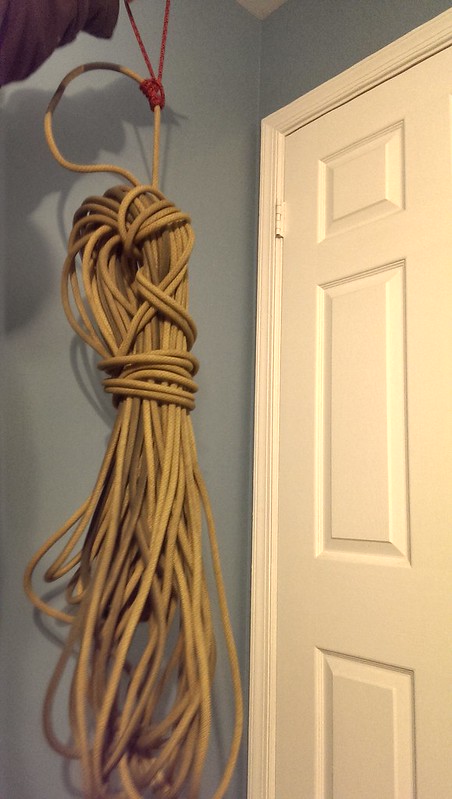- Joined
- Nov 18, 2010
- Messages
- 6,115
Alright folks, we are going to cover cordage and knotwork this time around. Since it's cold out this can be done primarily indoors. Making cordage is something we will need more info on, so if anyone here has experience (and preferably pictures) of making cordage, post it up, we need it.
As far as knotwork, I think we can handle that fairly well.
Like many others here I got a lot of my info and knowledge from Scouting. The story of how I ended up in Scouting started with knots, and it is something I use fairly regularly.
The basic knots that I use are as follows:
The Square Knot - Also known as the first aid knot, doesn't come undone with use, useful in bandages to keep them in place.

Two Half Hitches - Basically a clove hitch around your cordage, make for a very useful and easily tied sliding loop. I use this frequently in securing cargo on the initial end before tensioning.

The Taut Line Hitch - Typically used in tensioning guy lines or other types of lines. Not as useful with synthetic cordages as it will tend to slide with things like paracord. To increase grip, use multiple loops on the inside (instead of two use three or four).

The Bowline - Also called the rescue knot, this can be tied one-handed around one's torso to allow for a secure non-sliding knot that can be placed under ones arms for rescue purposes. Also useful for creating a non-slipping knot. Care must be taken because it will twist and come undone if tied improperly.

The Sheet Bend - Used for joining two pieces of cordage, typically ones that are different in size.

The Clove Hitch - Basically two half hitches around something instead of your cordage, this knot is one of the most useful knots in existence. Creates a non-sliding loop around another object, useful for anchoring a boat, tying off an animal, or for a ridge line.

This is far from the majority of knots I use, but these are the basic Boy Scout Knots, and should give anyone a fairly good base of information on tying them. There are several videos on how to tie them online. I highly recommend that if you are planning on learning to tie these knots and retain them well, tie them several times, over and over. The boy was forced to tie each one exactly one hundred times. He doesn't remember the names, but he knows how to tie them. I followed along and did the same, and it has definitely stuck.
I'll add more as I come up with it.
If I had to suggest further knots, I would recommend the Lark's Head and the Trucker's Hitch.
As far as knotwork, I think we can handle that fairly well.
Like many others here I got a lot of my info and knowledge from Scouting. The story of how I ended up in Scouting started with knots, and it is something I use fairly regularly.
The basic knots that I use are as follows:
The Square Knot - Also known as the first aid knot, doesn't come undone with use, useful in bandages to keep them in place.

Two Half Hitches - Basically a clove hitch around your cordage, make for a very useful and easily tied sliding loop. I use this frequently in securing cargo on the initial end before tensioning.

The Taut Line Hitch - Typically used in tensioning guy lines or other types of lines. Not as useful with synthetic cordages as it will tend to slide with things like paracord. To increase grip, use multiple loops on the inside (instead of two use three or four).

The Bowline - Also called the rescue knot, this can be tied one-handed around one's torso to allow for a secure non-sliding knot that can be placed under ones arms for rescue purposes. Also useful for creating a non-slipping knot. Care must be taken because it will twist and come undone if tied improperly.

The Sheet Bend - Used for joining two pieces of cordage, typically ones that are different in size.

The Clove Hitch - Basically two half hitches around something instead of your cordage, this knot is one of the most useful knots in existence. Creates a non-sliding loop around another object, useful for anchoring a boat, tying off an animal, or for a ridge line.

This is far from the majority of knots I use, but these are the basic Boy Scout Knots, and should give anyone a fairly good base of information on tying them. There are several videos on how to tie them online. I highly recommend that if you are planning on learning to tie these knots and retain them well, tie them several times, over and over. The boy was forced to tie each one exactly one hundred times. He doesn't remember the names, but he knows how to tie them. I followed along and did the same, and it has definitely stuck.
I'll add more as I come up with it.
If I had to suggest further knots, I would recommend the Lark's Head and the Trucker's Hitch.








